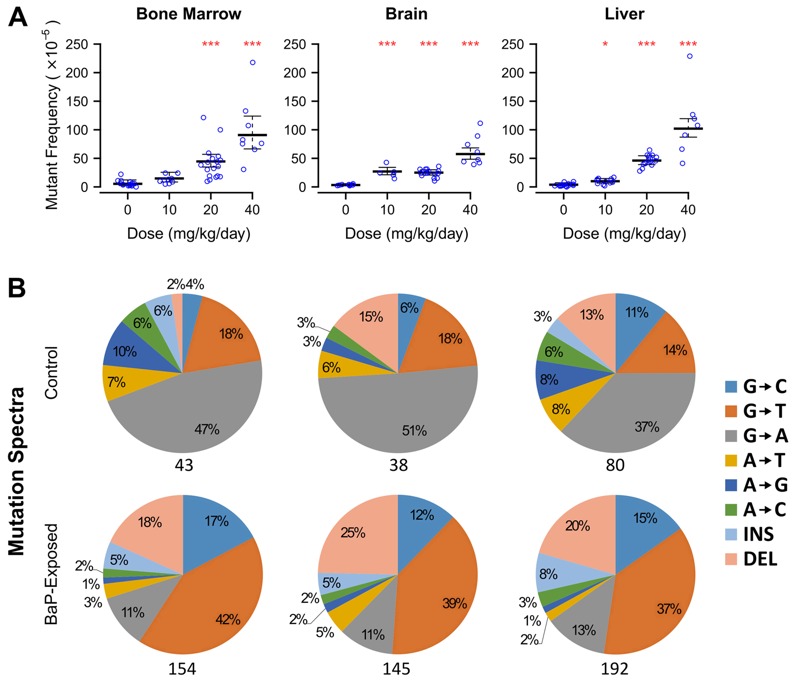Figure 1.

Male mice exposed transplacentally to benzo[a]pyrene (BaP) during organogenesis exhibited increased mutant frequencies in multiple somatic tissues. Dams were dosed at 0, 10, 20, or 40 mg/kg/day, and mutant frequencies [in 10-week-old first filial generation (F1) males] were determined using the lacZ transgene mutation assay. (A) In utero exposure to BaP induced a significant dose-dependent increase in mutant frequencies in somatic tissues originating from distinct primary germ layers, including the bone marrow (mesoderm), brain (ectoderm), and liver (endoderm). Error bars represent 95% confidence intervals. *p < 0.05, ***p < 0.0001, generalized linear model with quasi-Poisson distribution. (B) Next-generation sequencing of the lacZ reporter gene from animals exposed in utero shows the well-characterized molecular signature of BaP exposure, indicated in the pie charts as an increase in the proportion of G→T mutations. The number of unique lacZ mutations sequenced is noted beneath each pie chart. INS, insertion; DEL, deletion.
